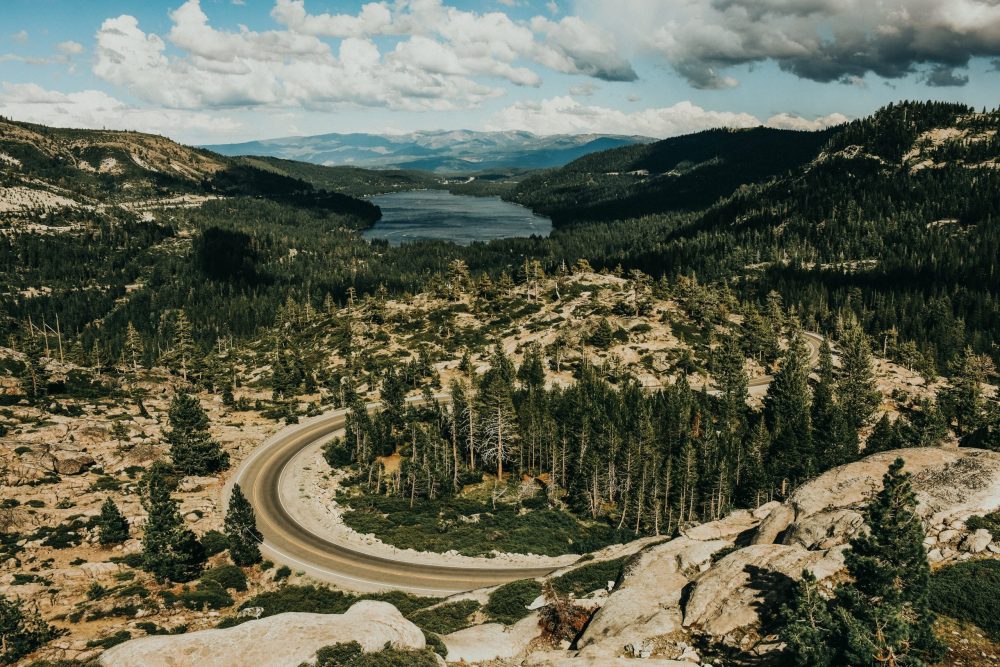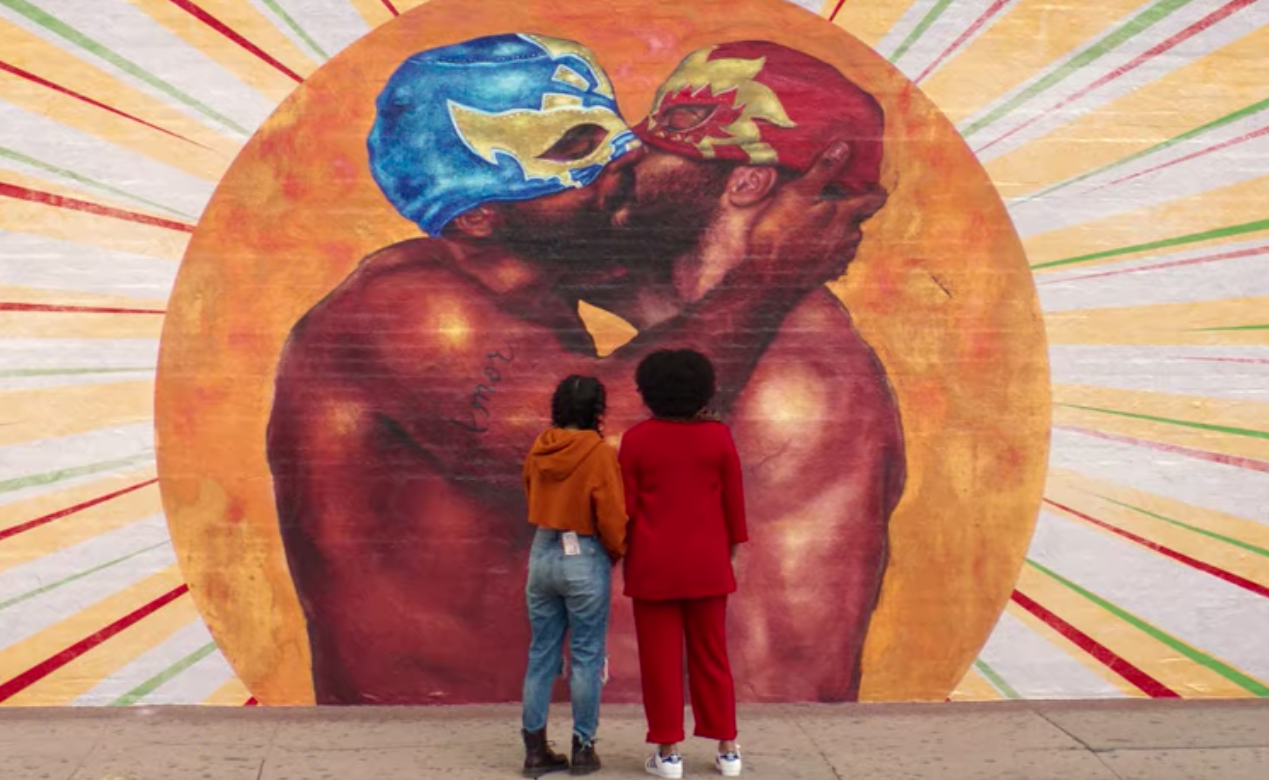essays
It’s Time to Take California Back from Joan Didion
The first lady of West Coast letters needs to share that honor with the Mexican diaspora

Amado Vazquez, a Mexican botanist, named an orchid after Joan Didion. While that was a chic gesture, I don’t think of her as an orchid. I think of her as an onion. She’s very white, very crisp, and she makes people cry.
In high school, I came up with a nickname for Didion: the windy bitch. She blew into my consciousness senior year when our English teacher herded my classmates and me into the school library to take an Advanced Placement literature test. We sat on wooden chairs, reading, grinding our teeth, annotating, flipping exam pages. At the end of my booklet, I came upon an essay whose opening line grabbed me by my anxious balls: “There is something uneasy in the Los Angeles air this afternoon…” The noir paragraph described a place I actually cared about: California. Often, when we read for English, we “traveled” to places I didn’t want a passport to. The Roman Senate. Winesburg, Ohio. Boats.
But here was home. And home was the star. And I understood the weather that this white lady was writing about! She described regional winds, the Santa Anas, which had touched my family. These shook the windows of the Los Angeles furniture store my dad’s mom, Grandma Hope, ran with her second husband, Bob.
In high school, I came up with a nickname for Didion: the windy bitch.
I lived about 150 miles north of the furniture store, in the Santa Maria Valley with my mom, sister, brother, and dad. Our local winds acted as devilishly as the ones the essay was detailing. Walking home from the bus stop, gusts spat grit and gnats into my eyes. They grabbed leaves and trash and whirled the debris in tiny cyclones along sidewalk gutters. During a windstorm, invisible hands snatched my skirt, tossing it above my ass, flipping it up in the front, inverting it like an umbrella. These same hands grabbed my dark hair, winding it around my neck, garroting me.
I wanted to read more about this familiar weather but I’d arrived at the excerpt’s final line: “The wind shows us how close to the edge we are.” Exhaling through my nostrils, I stroked the writing bump on my middle finger and scribbled an enthusiastic analysis I would’ve preferred to write in the first person, but which I wrote in the third.
I doubt my abuelito read Didion. He’s dead so I can’t ask him. He was a Mexican writer, publicist, and machista who actively avoided prose written by women. I do know that critic Michiko Kakutani’s claim that “California belongs to Joan Didion” would’ve given him a chuckle. He’d whip a pen out from under his serape and fix the line: “California belongs to Joan Didion because her ancestors stole it.”
In my imagination, Abuelito’s version of history wrestles Didion’s. The white literary establishment handed her California but I propose we wrest it away from her. The Mexican presence haunting her work could do so if those of us living outside Didion’s prose lend a hand to the diaspora trapped inside of it.
The white literary establishment handed her California but I propose we wrest it away from her.
I’m not suggesting we engage in mutiny, narrative or corporeal, because I hate Didion. To the contrary. Didion’s work guides me as much as it scoffs at me and I confess that her voice has been instructional. It invited me to experiment with gringa coolness and first-person narration. Didion’s regional fixations affirmed that California could serve as my muse. Many of Didion’s sentences resemble my favorite music, music no one should dance to. She modeled how writing yourself into the story of a place convinces readers that the place is yours. You, the author, fuse with rhetoric and fact. Your body joins the topography.
What chafes is Didion’s racial grammar. Sociologist Eduardo Bonilla Silva describes racial grammar as a conceptual metaphor involving three components. One, the rules of racial grammar govern how we see, understand, and feel about racial matters. Two, we acquire racial grammar through social intercourse. Three, rebels who develop a counter-grammar enable change.
Through rebellion against Didion’s racial grammar, we can unseat her as California’s thin-lipped literary grand dame. We can make way for other windy bitches, otras cabronas que quieran soplar…
An analysis of the racial grammar in Didion’s essay “Guaymas, Sonora” unveils why México exists: “It had rained in Los Angeles until the cliff was crumbling into the surf and I did not feel like getting dressed in the morning, so we decided to go to Mexico, to Guaymas, where it was hot.” According to this run-on sentence, México is something for gringos to do in their piyamas, o quizás en cálzon, on rainy days. It’s a pastime, and the point of doing México is similar to the point of camping. Campers seek temporary and recreational suffering and in Didion’s case, she wants “to become disoriented, shriven, by the heat…”
She and her half naked family drive through Nogales, the Sonoran Desert and Hermosillo. The further south they drive, the more her prose approaches the infernal.
Lost
Hot
Grotesque
Claustrophobic
Limbo
Moaning
Upon arriving at her destination, Didion goes into gothic overdrive, layering a symbol of death upon a symbol of everlasting life: a vulture perches atop a crucifix in the town square. To help us see Guaymas in our mind’s eye, she offers an Anglophilic reference: “As far as the town goes, Graham Greene might have written it.” Greene wrote The Power and Glory, a fine novel about La Cristiada, a Mexican religious war, but I find the reference a little galling. I’ve been to México many times and never once thought, “Ah, México…just as the British described it!”
Greene and Didion belong to the spiritual tradition of extranjeros palidos using México as a portal. “We went to get away from ourselves,” Didion explains. Now, if the writer left herself, and most of her wardrobe, in Los Angeles, who, or what, went to vacation in Guaymas? Didion answers this question by likening her journey south to the one made by the mythical queen Alcestis. Prior to her rebirth, Alcestis descends into the underworld. Didion’s transformation requires her to slip below the waistband of the Americas: the U.S.–Mexico border.
Didion’s transformation requires her to slip below the waistband of the Americas: the U.S.–Mexico border.
Terrible things populate underworlds and while Didion is in Guaymas, she comes to approximate one of these things. Sun, inertia, and liminality conspire, permitting her to indulge a persona I call Juana: “For a week we lay in hammocks and fished desultorily and went to bed early and got very brown and lazy.” (Emphasis all mine.) Didion’s punctuation succumbs to sloth as she abandons commas to conjure an enduring controlling image: the lazy Mexican. Sociologist Patricia Hill Collins created the concept of the controlling image, a device that dictates social scripts. Controlling images limit who we can and can’t be, and literary scholar Lee Bebout explains how this one functions: “[w]hether taking a siesta or laboring continually, Mexicans are often scripted as lacking entrepreneurial energies and a self-reliant, Waspy work ethic.”
Because whiteness is made oppositionally, Didion relies on this controlling image. Becoming a lazy Mexican purifies her. Hibernating in the heat will restore her WASPy womanhood. Like Alcestis, she will reject the permanent sleep offered by the underworld. She will never, at her core, grow lazy enough to quit caring about the work waiting for her in the United States.
By week’s end, being Juana bores Joan. Wanting “something to do,” Didion returns north, sloughing off her Brown persona, leaving Juana to the hellscape so masterfully rendered by that Englishman.
You could say that a part of México grew up in Didion’s house.
She named her only child after one of its coastal states and most popular tourist destinations: Quintana Roo. Imagine that.
Didion pronounces it gringishly: Quinn-tana. Though it’s tacky, it strikes me as on brand that Didion did this. Didion named her daughter Quintana Roo because she saw the words on a map and liked them. Didion mines México for language. Its words hold music but their meaning remains a mystery to her. Their sound yields ignorant amusement.
Didion mines México for language. Its words hold music but their meaning remains a mystery to her.
Didion takes a similar approach to her regional monographs. Drab civilization offsets racialized kitsch and gibberish: “…Delano, Tulare, Fresno, Madera, Merced, Modesto, Stockton. Some of these towns are pretty big now, but they are all the same at heart, one- and two- and three-story buildings artlessly arranged, so that what appears to be the good dress shops stands beside a W.T. Grant store, so that the big Bank of America faces a Mexican movie house. Dos Peliculas, Bingo Bingo Bingo.”
When I sense us on the page—bingo, bingo, bingo—my heart beats faster. Brown body parts twitch between certain lines and Mexican wood haunts “Los Angeles Notebook,” the essay that first brought me to the windy bitch. Santa Anas are more than winds. Santa Anas are people. Mi familia incluye Santanas de los Altos de Jalisco. In 1988, the Rock N’ Roll Hall of Fame inducted the band Santana which was founded by a Santana. A Santa Anna served as a notorious Mexican soldier, General Antonio López de Santa Anna Pérez de Lebrón. United States history books typically place him at the Battle of the Alamo but prior to that showdown, Santa Anna governed a state on the Gulf of México. Its sound would make Didion lick her naming chops.
¡Yucatán!
Santa Anna ruled as president of México an inordinate number of times. (You could rightly call the man a dictator.) Regardless, the United States has his leg. It followed a circuitous route to the Midwest after grapeshot fired by a French cannon in the Mexican state of Veracruz tore it up. Doctors amputated it and Santa Anna honored the casualty by staging a state funeral for it. Wearing a cork and wood replacement, Santa Anna fought in what Mexican history books call la Guerra de Estados Unidos contra México but while fleeing the Battle of Cerro Gordo on horseback, Santa Anna left behind his prosthesis. U.S. Infantry captured it. Soldiers took their trophy to Illinois, where it remains a roadside attraction.
Didion writes that we know when Santa Anas are coming “because we feel it.” I know Mexicans are in “Los Angeles Notebook” because I feel it. Somos Los Angeles. Somos el viento. Somos California. Somos playas y palmeras. Somos piernas invisibles.
In a “Los Angeles Notebook” anecdote, Didion obliquely addresses Mexican existence. She tells of a scorching and smoggy afternoon when, yet again, the weather prevents her from getting dressed. She heads to Ralph’s Market wearing “an old bikini bathing suit.” A “large woman in a cotton muumuu” disapproves of Didion’s outfit and chases her. The hunt follows the format and rhythm of a joke: “She follows me all over the store, to the Junior Foods (SET…), to the Dairy Products (UP…), to the Mexican Delicacies (PUNCHLINE)…”
This instance is the only time that the word Mexican appears in this iconic essay about a place that was once México. Given how primitive Didion finds México, and Mexicans, it seems that the comedic pleasure she takes is oxymoronic.
How can anything Mexican be a delicacy?
Kids raised in California inherit a macabre history. Adults take pleasure in recounting to them the grim lore of the Donner Party, those “settlers” who schlepped westward, ran out of food, froze and dined on each other. Since I developed a taste for the morbid during childhood, the Party’s demise titillated me. Their story felt like an antidote to the triumphant pioneer legends TV, textbooks, and teachers force-fed me. My dad taught me to be suspicious of the word pioneer. “If there are people to greet you,” he explained to me, “then you’re not a pioneer.” Applying this axiom during social studies got me in trouble with several teachers descended from pioneers. I spent a fair amount of my childhood wondering what the settlers tasted like. I wondered how they prepared one another to be eaten. I wondered if I had the wherewithal to eat my family. I wondered who I’d eat first.
Who would you eat first?
Why?
“The tale of the Donner Party,” writes Michiko Kakutani, “haunts Didion.” Didion’s great-great-great-grandma, Nancy Hardin Cornwall, travelled west with the Party but she and her fellow travelers split before the settlers established what came to be known as the Camp of Death. Still, Didion celebrates her great-great-great-grandma’s courage, glorifying her as a Daughter of the American Revolution who “never seem[ed] afraid of Indians or [shrank] from hardships.”
Didion inherited her great-great-great-grandma’s cornbread recipe along with her “wagon-trail morality.” She meditates on the latter in her essay “On Morality”: “…my own childhood was illuminated by graphic litanies of the grief awaiting those who failed in their loyalty to each other. The Donner-Reade Party, starving in the Sierra snows, all the ephemera of civilization gone save that one vestigial taboo, the provision that no one should eat his own blood kin.”
I’ve always believed that pioneers who suffered got what they deserved.
Maybe I’m a ghoul for taking pleasure in the settlers’ comeuppance; I’ve always believed that pioneers who suffered got what they deserved. I reserve my sympathies for the memory of the human beings that the settlers tortured. The account written by Party survivor Eliza Poor Donner Houghton tells that “eighty-one souls” attempted to reach California. After listing every white soul’s first and last name, she concludes with “Antonio (a Mexican) and Lewis and Salvador (the two Indians…).”
Lewis and Salvador were Miwoks who knew to distrust the Party. They fled but the settlers found and shot them, making them the only human beings they intentionally hunted and cannibalized. After the settlers watched Antonio freeze to death, they ate him too. Didion’s meditation on wagon-trail morality never names Lewis, Salvador, or Antonio but their presence pervades the wagon-trail meditation. The settlers Didion commemorates carried this human trinity in their bodies. White intestines became the three men’s graves.
These days, I find what Didion doesn’t show more interesting than what she tells. Literary criticism, along with history, hands me a scalpel, enabling me to slice open the stomachs of those subjects made visible by her prose. I can poke at the exposed contents, smell them, learn from them, and give them a proper burial. Can we make etching their tombstones a collective effort?
Let’s queerly circle back to place as muse.
I must tell you a Queerlifornia story.
A few summers ago I attended a party in Los Angeles. After taking a seat in the backyard, I unsuccessfully tried not to gawk at my hostess’ house. A party-goer noticed my struggle.
She leaned toward me and whispered, “It’s beautiful. I think it’s a Frank Lloyd Wright.”
I nodded.
I was also struggling not to gawk at breasts. They jiggled and hung everywhere. The backyard was Lesbos. Topless women lounged poolside. Others congregated in shallow water. A few floated alone, arms outstretched, eyes closed. A muscular lady in a bikini bobbed in an inflatable plastic donut covered in icing and sprinkles.
Lynn Harris Ballen invited me to this party but I will let Lynn’s spouse, Jeanne Córdova, introduce her. In her memoir We Were Outlaws, Jeanne explains that Lynn is the South African daughter of freedom fighter Frederick John Harris. “The fact of her paternity,” writes Jeanne, “drove me to investigate her further and in the process, I married her.”
These days, I find what Didion doesn’t show more interesting than what she tells.
Jeanne, whose parents named her after the French tomboy saint, was born to an Irish-American mom, Joan, and a Mexican-American dad, Federico. Jeanne’s role in her big Catholic family helped her land one of her first jobs which she got after noticing an ad pinned to a UCLA bulletin board. Jeanne applied and convinced a childcare-seeking couple that she was a competent candidate. She’d helped raise ten siblings.
Jeanne worked at the couple’s house and at first, the arrangement puzzled the baby dyke. She babysat the couple’s toddler while they remained home. Jeanne soon realized that both the wife and husband worked, each in their own book-lined office outfitted with typewriters. The couple behaved the way writers often do in one another’s presence, ignoring the other’s existence, passing the other in the hallway without acknowledgement, eyes distant, faces haunted by a preoccupation with language’s infinite problems.
The couple was Joan Didion and Mr. Joan Didion.
The toddler with the Chicana sitter was Quinn-tana.
Working for the Didions gave Jeanne a glimpse of the writing life and this exposure primed her ambitions. She became a Latina lesbian activist, organizer, editor, publisher, journalist, and author. I’m able to proclaim that I’m a free queer Chicana because of Jeanne’s labor. Jeanne’s labor also made it so that Didion could create her canonical vision of California. Jeanne’s labor made it so that my muse could belong to Didion.
Cancer had taken Jeanne by the time I dogpaddled in Lesbos.
She died of cancer in 2016.
Didion inherited a wagon-trail morality from her ancestors. From my queer Brown ancestors I inherited a different kind of morality, one that drives me to write for Lewis, Salvador, Antonio, and Jeanne. In this moment, California belongs to them. This sentence is their title, their deed.








